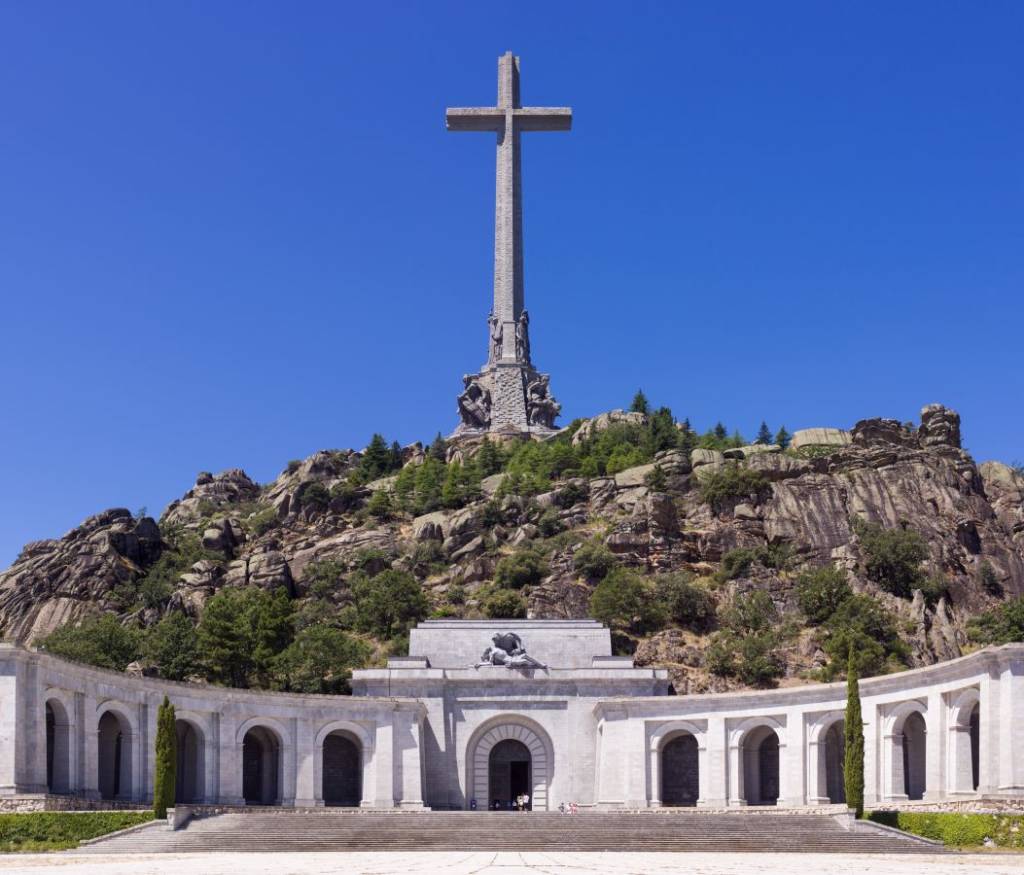Divisions Arise as Spain Decides to Remove Franco’s Body From National Monument
Spain’s modern-day liberal government continues to grapple with the country’s fascist past, a move opening deep divisions within the country.
Deep divisions and old wounds in Spain have been opened by the Spanish government’s decision to exhume former Prime Minister and military dictator Francisco Franco who ruled from 1938 to 1973.
For some Franco is an authoritarian fascist who is responsible for the deaths of hundreds of thousands of political dissidents and complicit in the Axis crimes of World War II through his support of Axis governments. For others, Franco is a hero and champion of Spain’s values who kept the country neutral and uninvaded during World War II.
When Franco died in 1975, both the left and right political leadership at the time signed a Pact of Forgetting, a resolution which avowed to not investigate the Franco legacy and instead focus only on the future. However, by the mid-2000’s popular sentiment began to call for more investigation into Franco’s legacy and now Spain’s government has decided to remove Franco’s body from it’s resting place at a national monument.

Valle de los Caídos (Valley of the Fallen), located in the municipality of San Lorenzo de El Escorial, Spain, is both a memorial and basilica conceived by Franco, who was buried within the mountain. (Photo: Godot13)
Spain Works to Reconcile its Past and Franco
While the rest of Europe experienced a surge of modern, progressive ideas under the influence of Enlightenment era ideals and new philosophical constructs, Spain was held hostage under the yoke of the Inquisition and austere Catholic policies that curtailed industry, expression, and freedom.
This legacy has had an enormous impact on Spanish culture that exists to this day, with everything from food to politics being affected. As a result of this stagnation, Spain is undergoing a late in coming progressive renaissance that many countries, including “forward-thinking” stalwarts such as the United Kingdom and France, should be envious of.
As nations such as the United States struggle with issues such as xenophobia and fascism, Spain is coming to terms with its authoritarian past and taking steps to remedy previous atrocities.
While the Spanish Inquisition led by the Catholic Church is a black mark on the legacy of Spain’s medieval history, modern Spain has moved past this period. However, the fairly recent fascist regime of Francisco Franco continues to influence Spanish politics and culture in extremely intense ways.
Ell Valle de los Caídos
Since the end of Franco’s fascist regime, Spain has thrown itself into the path of progression away from fascist ideals, but many parts of Franco’s fascist legacy still prevail. The most obvious and significant memorial to his ideals is the Valle de los Caídos (Valley of the Fallen), a giant memorial complex and basilica in el Escorial that serves as the final resting place of Francisco Franco and is, for many, a physical manifestation of his fascist ideology. Over 33,000 bodies lie at the monument, all of them except for Franco killed during the Spanish Civil War from 1936 to 1939.
When visiting el Valle de los Caídos, one experiences all the expected trappings of various structures constructed by authoritarian leaders as an homage to their political philosophy and cult of personality. It is big, it is terrifying, and it is falling apart, similar to the political framework of totalitarian ideology.
“You can tell that it’s been built by a dictator — you can tell that it’s fascist,” a young German man told Politico in 2015. “It’s weird that they still hold Mass here and people still come here and pray.”
Modern Spanish political forces have taken steps to distance themselves from Franco’s fascist legacy. As a result, El Valle de los Caídos, a monument that was constructed using slave labor (prisoners of war worked at the site in exchange for time off their sentences) and claims to honor the dead of both Republican and Fascist forces from the Spanish Civil War, is falling into severe disrepair and is in need of a vast reconstruction.
Spain’s modern liberal government is attempting to make amends for the atrocities of Franco’s regime by removing his body from the site and placing it in the care of his family. But this decision is revealing a divide in the country as Spain’s modern population is still split with regards to processing Franco’s toxic legacy.
Deep Divisions Over Francisco Franco’s Legacy in Spain
Many members of Spain’s current population lived under Franco’s regime, and the merits of his government are contested among different strata of Spanish society. To this day, one can still see pro-fascist groups protesting in the streets, lamenting the death of Franco and the end of his Fascist government, but at the same time, Spain is home to more far-left political groups than most European countries.
Outside of Spain, Franco is commonly mentioned in the same breath as Italy’s Mussolini or Germany’s Hitler, but organizations like the National Francisco Franco Foundation(FNFF) liken Franco to Winston Churchill or Napolean. A poll as recently as 2006 found that one-third of Spaniards believed Franco was right in overthrowing the Republican government.
Gustavo González, a real estate agent from Madrid, explained that one of the biggest reasons that many Spanish citizens still consider Franco’s regime to have had a positive impact on the country is that during the Francoist era it was impossible to openly criticize Franco’s government, and as a result many instances of corruption and fraudulent financial policy are still yet to be revealed.
“Some people still consider Franco to be a good leader because during this period you couldn’t talk about the widespread corruption that was occurring… there was a lot of misinformation and cases of misappropriation of public funds that the general public was not aware of,” González told Citizen Truth.
Franco dissidents say many Spanish citizens are either unaware or willfully ignorant of the role that Franco’s economic policy played in contributing to the country’s current economic problems, and as a result still believe that his government’s policies benefitted the country as a whole.
Spain Decides to Exhume Franco’s Body
The move towards removing Franco’s legacy is largely the work of Spain’s newest Prime minister, Pedro Sánchez, who replaced the conservative Mariano Rajoy this past June. Spain is an anomaly among European countries that have harbored fascist governments in that the final resting place of its authoritarian dictator is still a national monument and place of pilgrimage for fascist sympathizers, sympathizers who still make pilgrimages to Franco’s grave. There is no equivalent to El Valle de los Caídos in Germany for example, nor is there a similar monument to Mussolini in Germany.
Antonio Cuenca, a 54-year-old photographer and father of a family of four children and five dogs from Alicante in the south of Spain, was quick to note this distinction and emphasize the importance of the government taking measures to ensure that fascism never again returns to Spain.
“It’s a time and place that we should never return to… For me, this is even more important that removing the dictator from his tomb, as this is no more than a political move playing to the gallery. They would never allow tombs honoring Mussolini or Hitler in Europe, much less give people the means to admire and praise these dictators,” Cuenca said.
As Spain moves towards more progressive social and economic policies, it will continue to grapple with the effects of Franco’s legacy that still manage to have profound impacts on the political and economic situation of the country.
Removing Franco’s body from what many consider to be a national monument to fascism will not bring back to life the individuals who were tortured and killed by Franco’s regime, nor will it erase the consequences that his policies have had on the country’s economy and culture. Nonetheless, the move will demonstrate that Spain’s current government is moving to distance itself from Spain’s fascist past and will continue to remind the population of Spain that fascism can never again return to the country.















